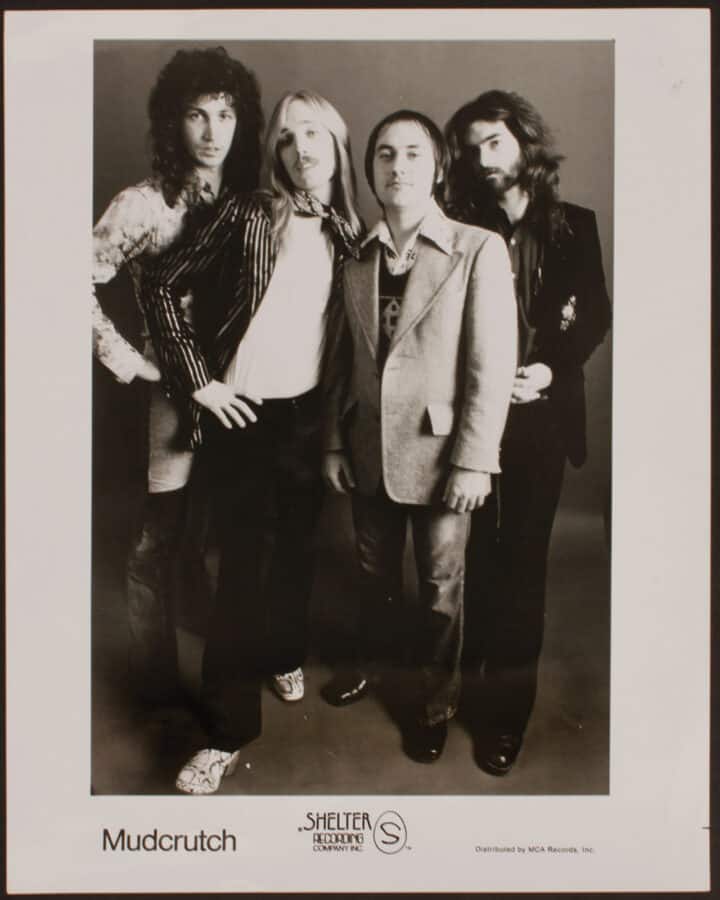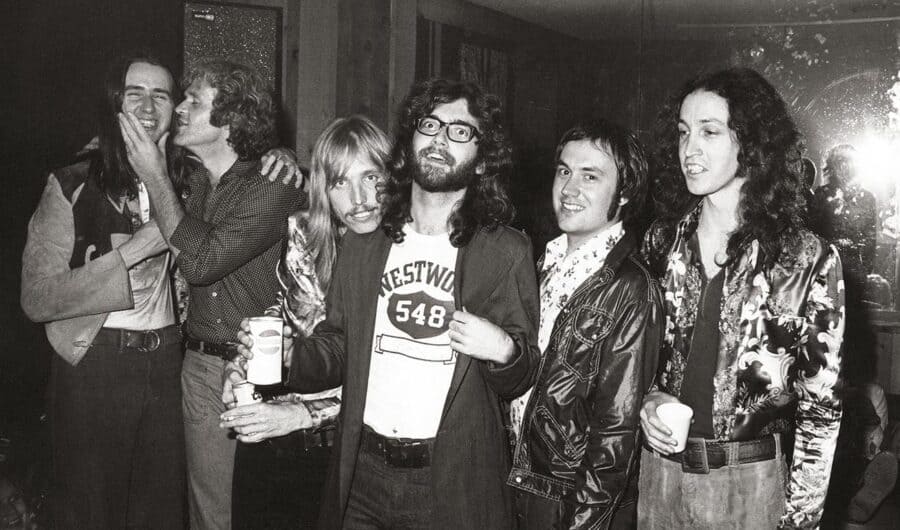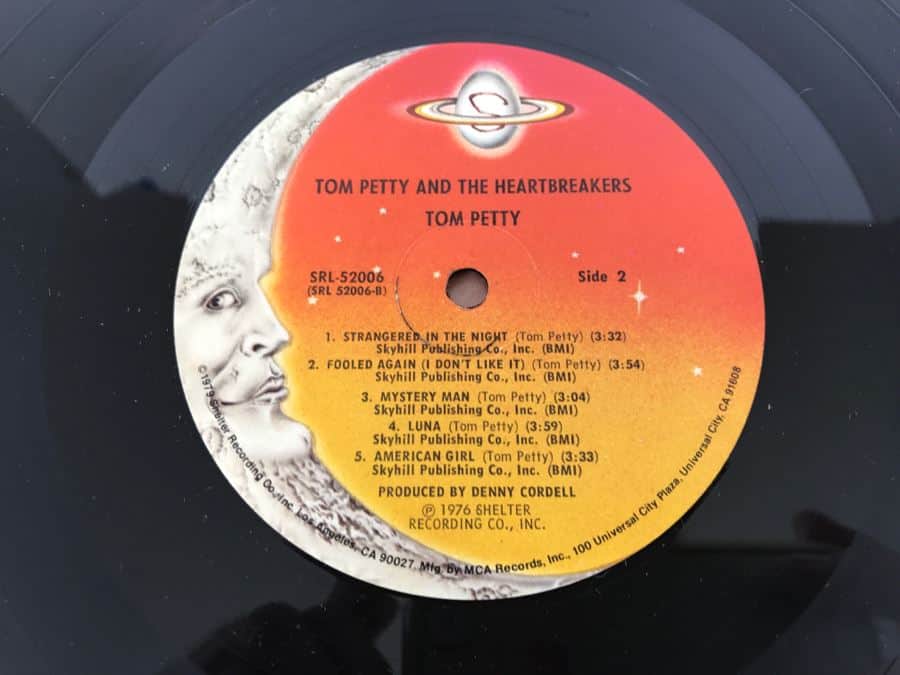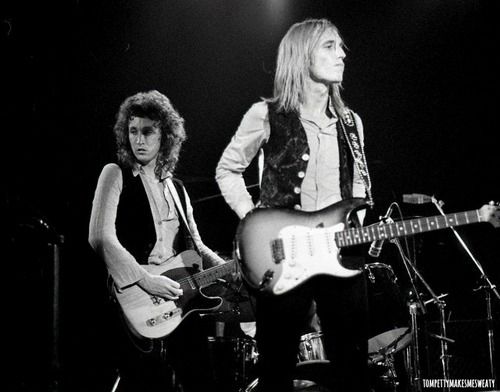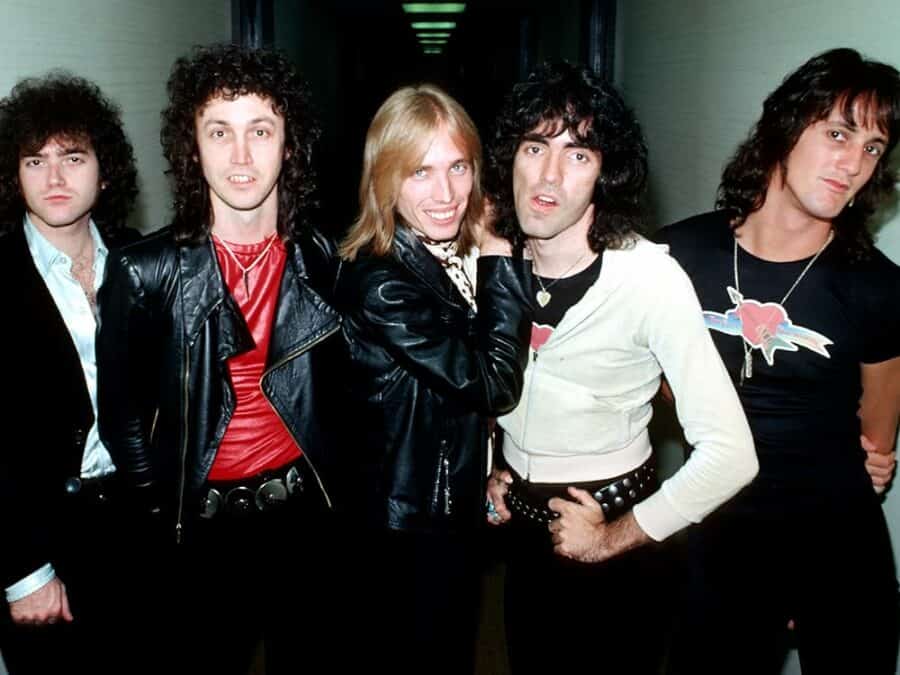Tom Petty’s Journey at The Church Studio

The most important years during the Leon-era history of Tulsa’s Church Studio were 1972–1976. During that time, a wide variety of artists recorded there, some important in music history, others less so. Tom Petty has a story at The Church Studio before he and The Heartbreakers found worldwide success. Both Denny Cordell and Leon Russell were influential in helping guide the hugely ambitious and hardworking Petty during his early years trying to break into the music business.
(Note: Most of the content in this blog comes from the book Petty: The Biography, Warren Zanes’s excellent and thorough account of the life of a rock and roll icon, first published in 2015. The italicized text below indicates a direct quote from the book.)
Mudcrutch, a Gainesville, Florida-based American southern and country rock band co-founded by Tom Petty, made their first demo tape in 1974. They mailed the demo to numerous labels, the majority based in Los Angeles, but were met with rejection from each one. Undeterred, a few of the band members decided to go to Los Angeles and continue their search for a label. Once there in person, executives showed more interest, with London Records being the most promising. Mudcrutch was thrilled with the possibility of being signed by London Records, the Rolling Stones first label. With a verbal agreement to sign Mudcrutch, London Records requested that the remaining band members travel to Los Angeles so the deal could be finalized.
Back in Gainesville, the group prepared a caravan to make the drive to Los Angeles, a convoy that included assistants, girlfriends, and wives. Before leaving Florida, Petty received a call from Denny Cordell, a British record producer and co-owner of Shelter Records, along with Leon Russell. He was excited about the demo tape that had made its way to Shelter’s Los Angeles office, offering to immediately sign the band, claiming that they were going to be “the next Rolling Stones.” Cordell convinced them to bring their caravan through Tulsa where he would meet them. The band members respected the work Cordell had done with Joe Cocker and Procol Harum, so they were familiar with his talents.
Tulsa may not have had the glamour of Hollywood, but Petty knew that Cordell’s partner, Leon Russell, was the king of Tulsa. And they made records out there. And some of those records became hits. When he [Petty] went back outside, where they were packing things into the vehicles, everyone liked the idea. A lot. (Warren Zanes)
Arriving in Tulsa, Mudcrutch met Cordell at a diner he suggested. Today, this diner is called Freeway Cafe, but in 1974, it was The Ranch House Restaurant. The band members liked Cordell instantly and agreed to sign with Shelter Records instead of London Records. Cordell gave them a $3,000 cash advance and set them up at The Church Studio, located directly across the street from the restaurant, for a recording session the next day.
“He was sold on us, and we were sold on him,” says Petty. “London Records looked cool to us, but the guy over there was an executive. Cordell made records—records that were a big deal. Shelter was this label run by a couple of renegades, artists, and guys who were actually out there finding music and cutting records. We didn’t need to deliberate.”
After just one day of recording, Cordell was even more convinced, and the band hit the road for California. The contract was finalized once the group arrived in Los Angeles. Band members rented two homes in the San Fernando Valley, hung out at the Shelter Record offices all week long, and partied with Shelter staff every weekend. Instead of the group spending time in a Los Angeles recording studio, Cordell spent most of his energy meeting directly with Petty to work out how Mudcrutch might fit into the mid-1970’s music scene.
“…I reckon he probably knew it would be a year before I was going to be ready. I think he got that I just wasn’t there yet, that he’d have to coax it out of me. We didn’t know how far off we were.” (Tom Petty)
Eventually, Cordell sent the band back to Tulsa to record at The Church Studio. Since he owned The Church Studio, recording time was free, in contrast to hourly or daily charges in Los Angeles. They were in Tulsa only a few days, recording Mudcrutch originals “I Can’t Fight It” and “Lost in Your Eyes,” as well as a version of Solomon Burke’s “Cry to Me.” They also opened for Asleep at the Wheel, who happened to be in Tulsa at the same time.
Later in 1974, Mudcrutch returned to The Church Studio for a third time, this time recording the first version of “Don’t Do Me Like That.” At the time, the band didn’t think there was anything to the track. It had been written quickly based on a saying that Tom Petty’s father used frequently. At one point, the song was offered to the J. Geils Band, but they passed on it. A different version of the song went on to be a top-10 hit for The Heartbreakers in 1979.
Mudcrutch issued one commercial song, “Depot Street,” in 1975, but it failed to chart, and Shelter pulled the band from their roster. Things were moving too slowly, and the recording expenses were mounting. Denny Cordell did, however, maintain Tom Petty under contract, with Petty pushing to keep guitarist Mike Campbell under contract as well, which Cordell agreed to.
That same year, the Mudcrutch demo was still floating around Shelter Record’s Los Angeles office. Amazingly, Tom Petty had not yet met Leon Russell, even though he had spent time house-sitting for him in Los Angeles. During a visit to the office, Leon heard the song “Lost in Your Eyes” and was immediately captivated by it. He asked to meet the person who wrote it.
“Lost in Your Eyes” had a believability that went beyond the living room demos that got the band signed. It may not be a perfect production, but it has within it all of the raw materials that would bring so much life to Petty’s catalog. As a recording, it is part way there. As a song, it is more than that…Leon Russell helped Petty see that there was something going on in that song that was worth considering. (Warren Zanes)
Impressed with this song, Leon’s initial intention was to co-write with Tom Petty, but that didn’t end up happening. Instead, Petty shadowed Russell as he went about his own unique way of doing business and making music.
“Through that whole period, I never ended up writing anything with Leon. Nothing. I just watched these legends come in and out of the picture. They talked to me, told me things. I got to watch them in the recording studios. I don’t think Leon really knew what he wanted to do next, but he was great to me. I learned a lot from him. I saw a lot of things that maybe you shouldn’t do, and some things you should. Cautionary tales were in every other room I passed through.” (Tom Petty)
By late 1975, Tom Petty finally felt ready to form a new band. The band that would go on to become The Heartbreakers included several former Mudcrutch members. By this point, Denny Cordell and Leon Russell had a major falling out, with the Shelter Record label going to Cordell in the legal proceedings.
In 1976, Cordell set up a Shelter recording studio in Los Angeles using equipment from the Tulsa Church Studio. Recording engineers Noah Shark and Max Reese, who would go on to work on the first two Heartbreaker albums, were sent to Tulsa to retrieve the equipment, with Petty and Stan Lynch (Mudcrutch/Heartbreakers drummer) accompanying them. Before the equipment was moved out of the former church, Petty and Lynch cut tracks for the song “Luna.” Petty sang vocals and played the Hammond B3 organ, while Lynch played drums and the ARP String Ensemble, a polyphonic multi-orchestral synthesizer. These tracks were used for the final mix of “Luna” that appeared on Tom Petty and The Heartbreakers self-titled debut album, released in November 1976. The record was a hit the following year in the United Kingdom, reaching No. 24 on the UK album chart. Success came more slowly in the United States, but finally, in 1978, the singles “American Girl” and “Breakdown” were on constant rotation on American airwaves, and the rest, as they say, is history.
Laura Rountree Bennison, the author of this blog, is a third-generation Okie and retired art museum professional. Born and raised in Oklahoma City, she currently resides in Tulsa with her husband, Bill. She volunteers for sister properties, The Church Studio and the historic Harwelden Mansion.

